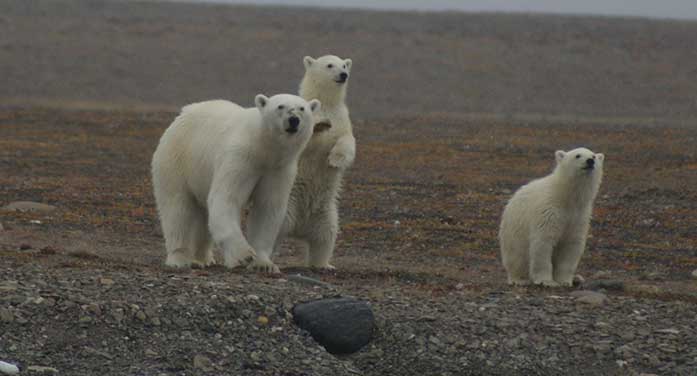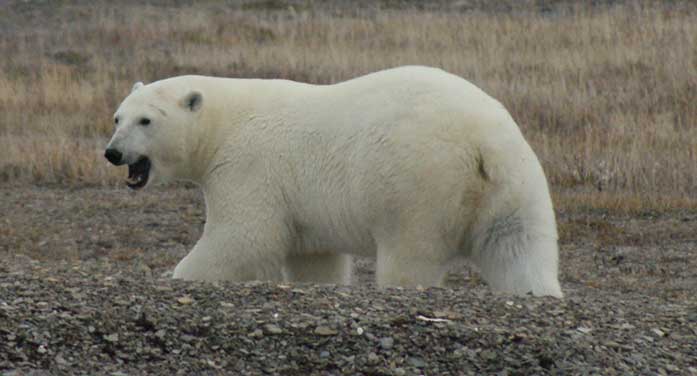
Polar bears are solitary, non-territorial animals that range over tens of thousands of square kilometres throughout the year, searching for food on or near pack ice
 I recently had several encounters with polar bears in the Canadian Arctic at Coningham Bay on Prince of Wales Island, along the Nunavut coast.
I recently had several encounters with polar bears in the Canadian Arctic at Coningham Bay on Prince of Wales Island, along the Nunavut coast.
We had been advised that bears sometimes frequented this interesting area because Beluga whales often came here to moult and feed, and they are a plentiful and reliable source of food for the bears.
It wasn’t long before we confirmed that the whales did use the area as their carcasses littered the shore from seasons past – but not this year.
However, the opportunistic bears were also there in force near the Franklin Strait east of Baffin Island – watching and waiting. We saw two females with a pair of cubs each and at least 14 other bears, each patrolling its bit of beach. What a marvellous event, especially considering how poorly these bears are reportedly faring over much of their range.
The polar bear is perhaps the largest bear in the world, with males reaching weights of close to three-quarters of a tonne and females about 450 kg. They’re solitary, non-territorial animals that range over tens of thousands of square kilometres throughout the year, searching for food on or near pack ice.
Once each year they come together on the sea ice to breed. The male relentlessly pursues the female until she accepts his advances. After about a week of mating, she heads off on her solitary wanderings, as does he. In the fall, she allows the sperm she carries to fertilize her eggs. This is called delayed implantation, where the sperm isn’t used until conditions are perfect for breeding success.
In late November to early January, the one to four (but usually two) young are born in a maternity den, where they stay until spring. They weigh only one to one and a half kg when born, but when they emerge from the den in the spring they will have increased their weight tenfold. They will stay with the female for the next two and a half years as she feeds, teaches and defends them against danger.
Life is tough for polar bears as the climate is extreme, ice depths and quality variable, and food scattered over vast areas. But, somehow, they persist and most live to be 20 years old – if they get through the first two years of life, that is.
Food consists mostly of seals, but small whales (e.g. narwhals and belugas), other polar bears, grasses, berries and carrion round out their diet. Surprisingly, if times are good, they will only eat the energy-rich blubber of the seals they catch, leaving the meat to scavengers such as foxes, ravens, gulls, weasels and the like.
 Superb swimmers, they can travel for days as they dog paddle through the icy waters of the north.
Superb swimmers, they can travel for days as they dog paddle through the icy waters of the north.
How are they doing, considering what’s happening with climate change?
It’s difficult to say, but it’s estimated that about 20,000 bears persist worldwide. This may sound like a lot but it isn’t when one considers the vastness of the north, the hunting pressures they still face, diminishing ice and the changing behaviour of prey species.
We saw 34 bears on our 11-day voyage through Canada’s Northwest Passage. What a wonderful remembrance of our incredible journey.
So, for now, in parts of their range at least, they seem to be okay. But for how long?
Geoff Carpentier is a published author, expedition guide and environmental consultant. Visit Geoff on LinkedIn, Instagram and Facebook. For interview requests, click here.
The opinions expressed by our columnists and contributors are theirs alone and do not inherently or expressly reflect the views of our publication.
© Troy Media
Troy Media is an editorial content provider to media outlets and its own hosted community news outlets across Canada.

